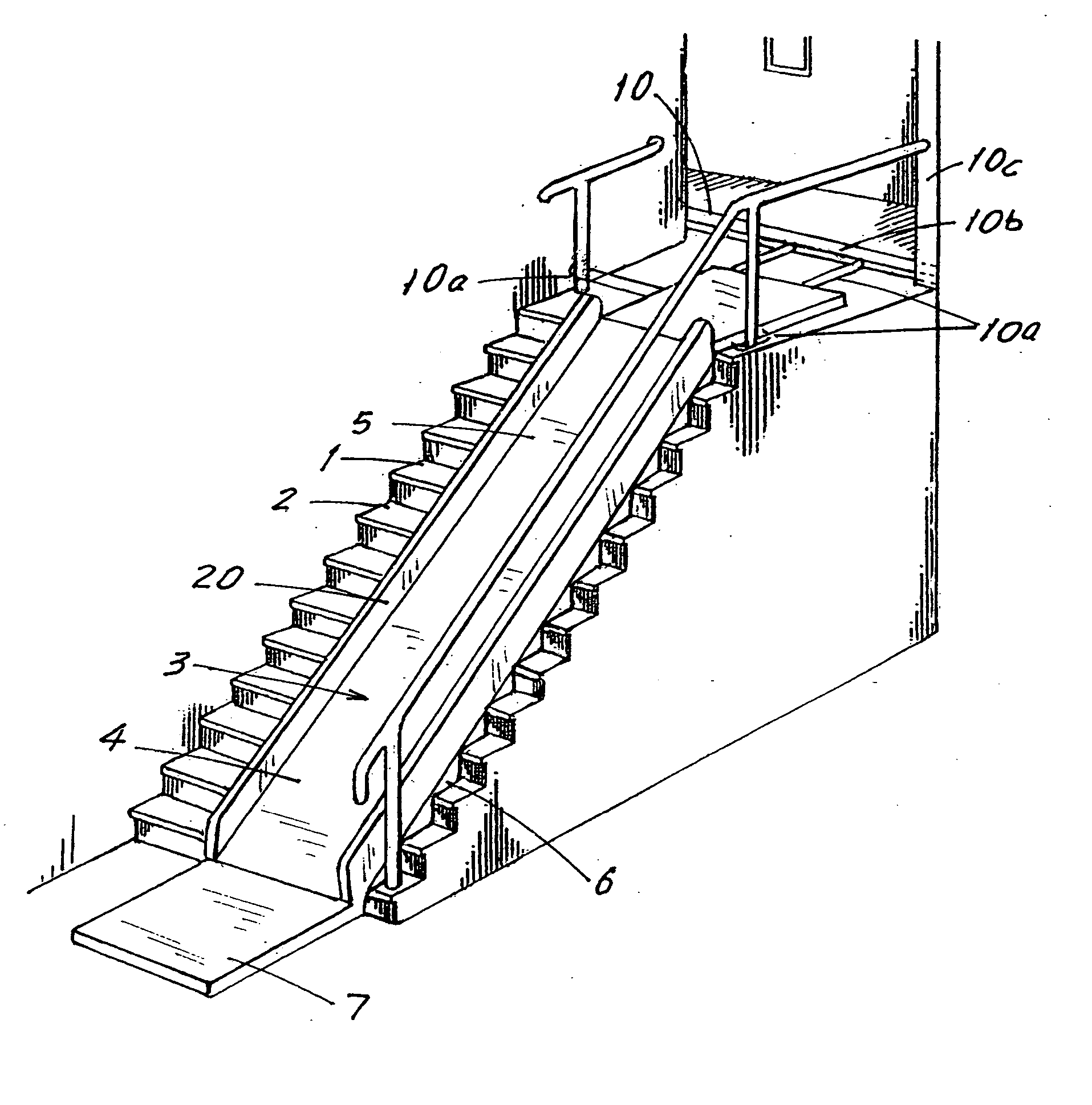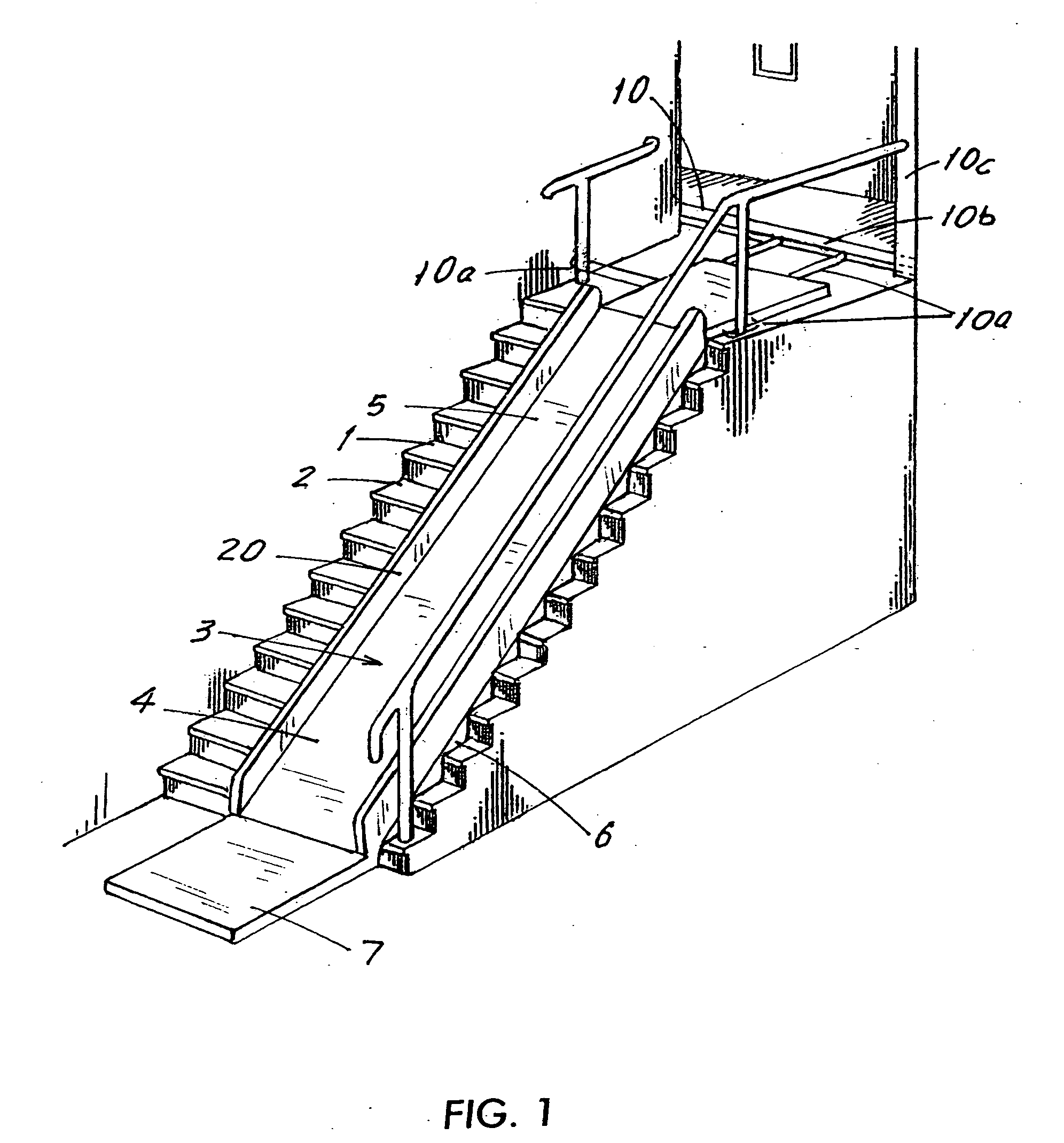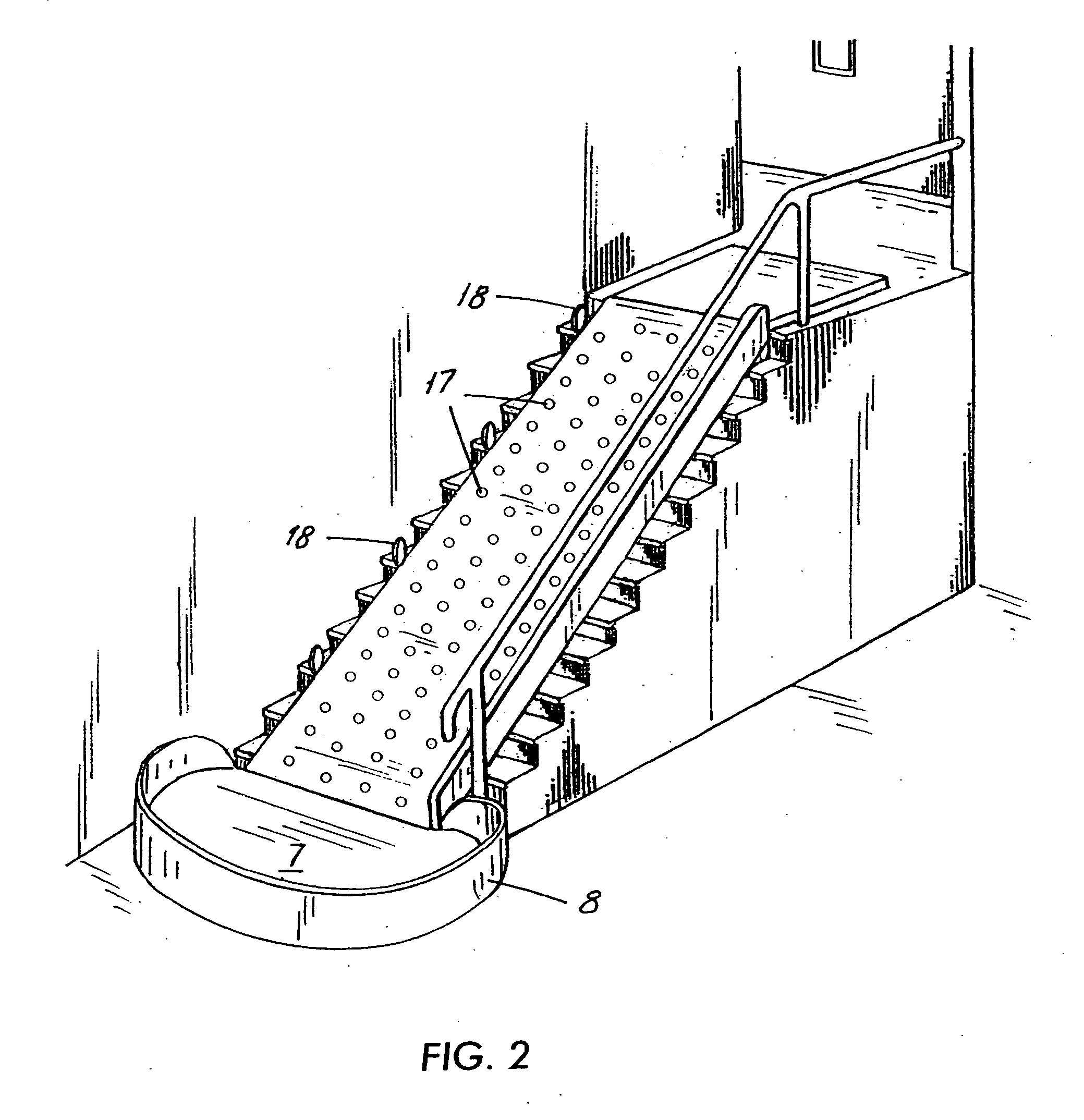Indoor stair slide for transporting the handicapped between floors and/or for joyful rides
- Summary
- Abstract
- Description
- Claims
- Application Information
AI Technical Summary
Benefits of technology
Problems solved by technology
Method used
Image
Examples
Embodiment Construction
[0024]FIG. 1 schematically shows the side view of a stairway 1 having a number of steps 2. The inventive slide 3 has a longitudinally extending inflatable body 4. The body can be made of any suitable material such as vinyl or rubber. The body 4 has a smooth, generally flat upper section with a surface 5 along which a user can slide when the body 4 is inflated, preferably protected by inflatable sidewalls 20 to prevent bumping into the walls or steps of the staircase. The body 4 also has a lower section 6 with a stepped configuration whereby the lower section supports the upper section 5 on the steps 2 of the stairway 1 when the body 4 is inflated.
[0025] At the bottom of the body 4 is a landing portion 7, with an optional inflatable protective wall 8 (FIG. 2) which preferably encloses the landing area 7. The body 4 can be made up of a single chamber or a plurality of inflatable chambers that are sealed from one another to improve structural rigidity and enable continued use even if ...
PUM
 Login to View More
Login to View More Abstract
Description
Claims
Application Information
 Login to View More
Login to View More - R&D
- Intellectual Property
- Life Sciences
- Materials
- Tech Scout
- Unparalleled Data Quality
- Higher Quality Content
- 60% Fewer Hallucinations
Browse by: Latest US Patents, China's latest patents, Technical Efficacy Thesaurus, Application Domain, Technology Topic, Popular Technical Reports.
© 2025 PatSnap. All rights reserved.Legal|Privacy policy|Modern Slavery Act Transparency Statement|Sitemap|About US| Contact US: help@patsnap.com



